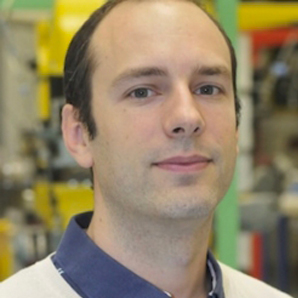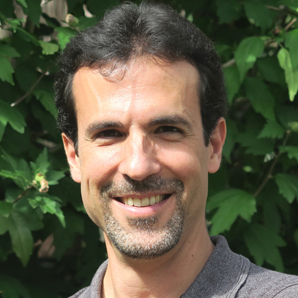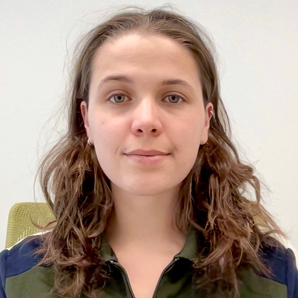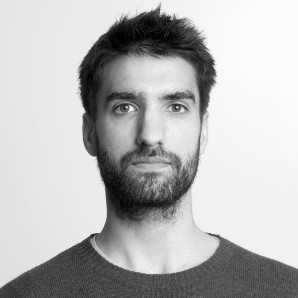
CNRS
Description
The National Centre for Scientific Research is an interdisciplinary public research organisation under the administrative supervision of the French Ministry of Higher Education and Research. The contributions involves three shared units from CNRS: laboratoire de Photophysique et Photochimie Supramoléculaires et Macromoléculaires (PPSM, CNRS / ENS Paris-Saclay), Laboratoire de Mécanique Paris-Saclay (LMPS, Université Paris-Saclay / CentraleSupélec / ENS Paris-Saclay / CNRS) and Institut Photonique d'Analyse Non-destructive Européen des Matériaux Anciens (IPANEMA, CNRS / Université de Versailles – Saint-Quentin-en-Yvelines / Ministère de la Culture / Muséum national d'histoire naturelle).
Contribution
CNRS contributes to all work packages of the project and particularly Work Package 5 on Methodologies for Greener Solutions. The main expertise brought to the project is in chemistry, mechanics, data science, analytical methods and instrumentation.

Emmanuel Baranger
Emmanuel Baranger is a French researcher in solid mechanics. He graduated from Ecole Normale Supérieure Paris-Saclay where he studied and obtained his PhD (2005) and habilitation (2014). He joined CNRS in 2007 as a full-time researcher at the Laboratory of Mechanics Paris-Saclay (LMPS), where he heads the composite group. Since 2018, he is also an adjunct professor at ENS Paris-Saclay.
At LMPS, E. Baranger’s research focuses on the mechanics of complex architectured materials, especially composite materials. From the micro-scale up to the macro-scale, he developed constitutive models and numerical strategies to handle complex dissipation/healing scenarios representing the competition of different mechanisms for highly tailored morphologies. This research is mainly related to the cracking and durability of long fibre-reinforced composite materials for the aeronautic and nuclear industries (polymeric or ceramic matrices) and biomaterials.
He published 30 research papers, 100 conferences and supervised or co-supervised 13 PhDs and 8 postdocs. He has contributed to 10 national and international research projects and is now co-director of the French research group on data-augmented engineering (GDR I-GAIA). In the Go-Green project, he will mainly be involved in WP5 to determine how his experience with industrial materials and applications can be transferred to patrimonial materials for durability conditions.
Serge Cohen
CNRS Researcher, IPANEMA lab
Mathieu Thoury
CNRS Research Engineer, IPANEMA lab

Rémi Métivier
Rémi Métivier is a CNRS Research Director at the PPSM Laboratory (CNRS / ENS Paris-Saclay), leading the research theme related to “photo- and/or electro-switchable materials”. He has a recognized expertise in the photophysics and photochemistry of materials based on luminescent and photochromic molecules, involving time-resolved spectroscopy and multimodal imaging methodologies. In the frame of the GoGreen project, Rémi Métivier contributes to the WP5 “Methodologies for Greener Solutions” by developing novel analytical methods to assess non-destructive treatment efficacy and impact, through characterization of surfaces with innovative optical imaging techniques, coupled with suitable data processing. He works on the development of new cleaning processes, minimizing the risk of degradation and retaining optimal optical, chemical and mechanical properties of the original material.

Laure Cazals
After a double bachelor's degree in mathematics and physics at Sorbonne University, Laure Cazals obtained a double degree in physics between the masters Materials Physics and Nanoscience (MANO, University of Bologna) and Material Sciences and Nano Objects (SMNO, Sorbonne University). In October 2022, she starts a PhD at the laboratory of Supramolecular and Macromolecular Photophysics and Photochemistry (PPSM) under the supervision of Loïc Bertrand (CNRS, PPSM) and Agnès Desolneux (CNRS, Centre Borelli) in the framework of the European project Gogreen. Her research focuses on the development of new methodologies to evaluate the chemical action of organic restoration treatments, both on the surface of objects and at depth. Her PhD is part of WP2, WP3 and WP5. The innovative imaging techniques developed in her project are X-ray Raman spectroscopy (a new imaging method to identify 3D organic compounds in thick samples of complex composition) and UV/visible photoluminescence. By combining statistical data processing and collection methods, she seeks to obtain high-resolution chemical data, sensitive to the presence of traces, while maintaining a reasonable dose on the sample. To do so, she develops numerical approaches based on the modeling of spectral imaging data, taking into account the specific characteristics of heritage samples both from the spectroscopic point of view and the spatial distribution of the information. Statistical tools can be evaluated with these models and then applied on spectral images of real objects to analyze the efficiency of a treatment or alterations on the surface.

Victor Gonzalez
Victor Gonzalez is a CNRS researcher in the PPSM laboratory at ENS Paris Saclay. He received a PhD in Chemistry from the Sorbonne University in 2016, conducted at the C2RMF in Paris. He then worked in the Netherlands, first as a post-doc in the Material Science Department of TU Delft, and then as a junior scientist at the Science Department of the Rijksmuseum in Amsterdam. In 2021, he became a Marie Curie fellow at the PPSM laboratory befoire joining the CNRS in 2023. His work is aimed at chemically revealing the production methods and dynamics of ancient pictorial matter, through the development of innovative analytical methodologies based on a combination of X-ray and optical techniques.
